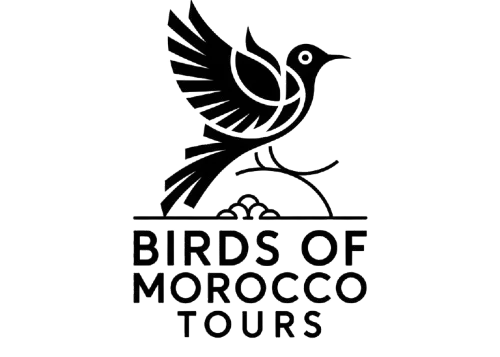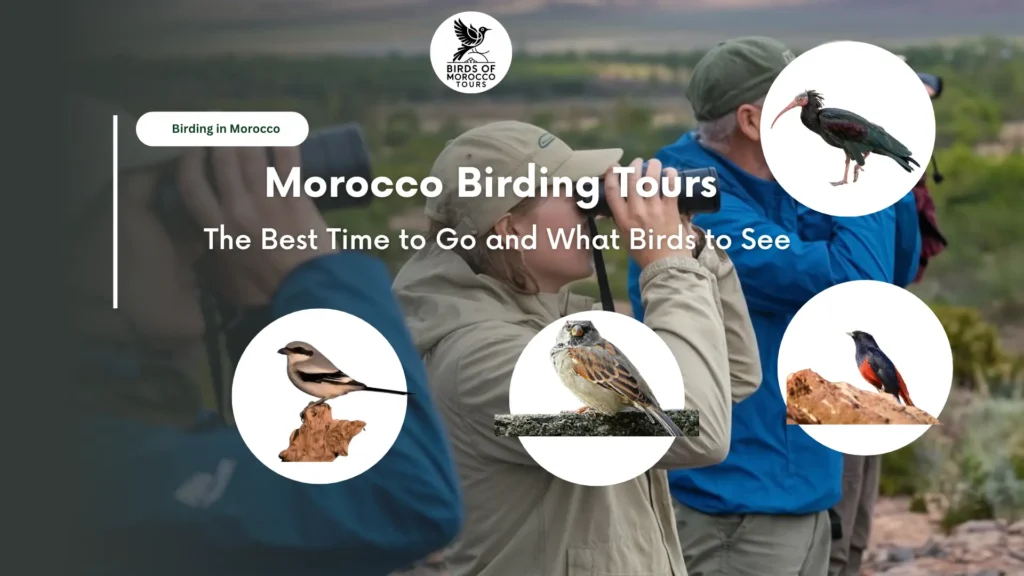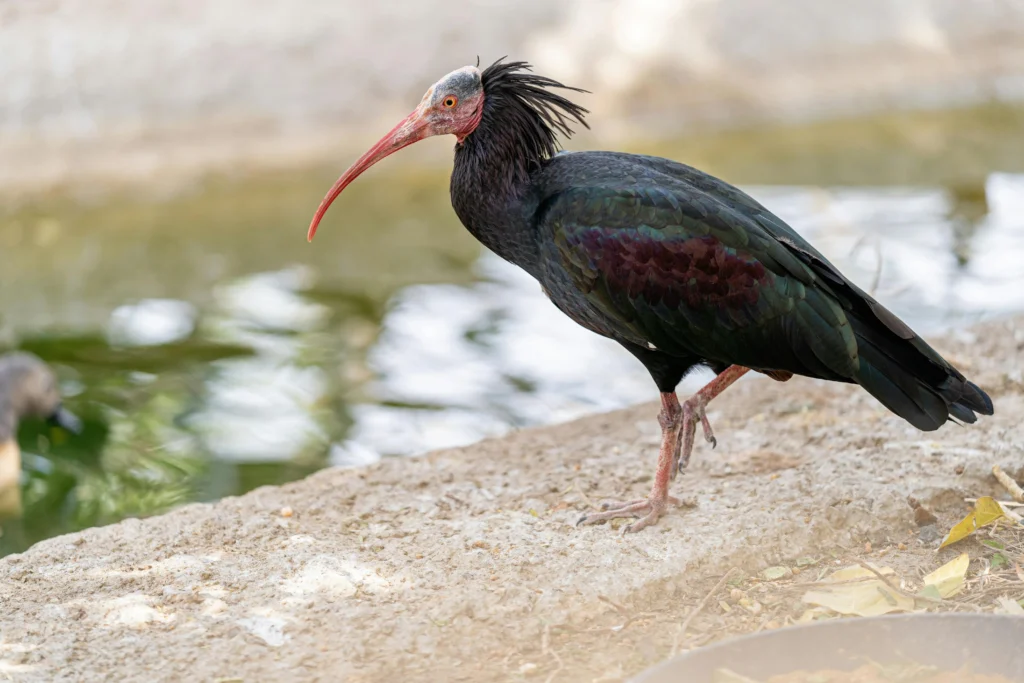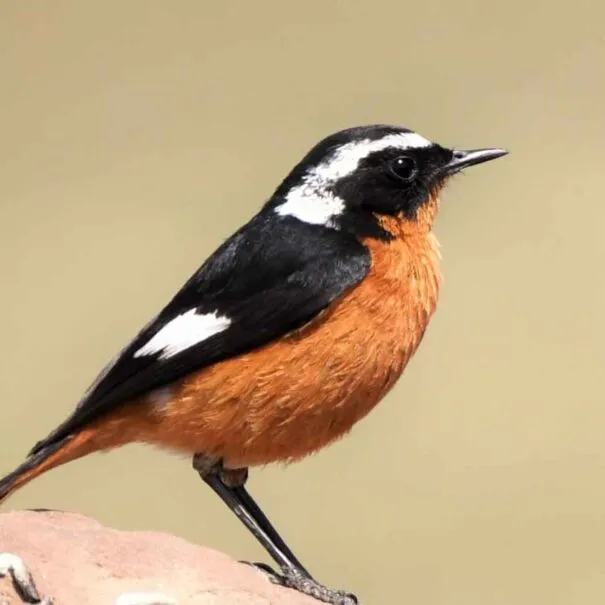Morocco is a paradise for birdwatchers, offering a unique blend of African, European, and desert bird species. With its strategic location along major migratory routes, the country attracts a rich variety of resident and visiting birds, making it one of the top birding destinations in North Africa.
From the snow-capped Atlas Mountains to the vast Sahara Desert, Morocco’s diverse landscapes provide habitats for an impressive array of birdlife. Coastal wetlands such as Souss-Massa National Park are home to rare species like the Northern Bald Ibis, while the Merzouga Desert hosts desert specialists like the Pharaoh Eagle-Owl and Cream-colored Courser. Meanwhile, lush forests in Ifrane National Park shelter birds like the Levaillant’s Woodpecker.
Birding tours in Morocco are popular among birdwatchers worldwide due to the country’s accessibility, well-preserved habitats, and the opportunity to spot endemic and migratory species in breathtaking settings. Whether you’re searching for colorful songbirds, majestic raptors, or wading birds, Morocco offers an unforgettable birding experience year-round. In this guide, we’ll explore the best time for birdwatching, the top birding locations, and the must-see birds on a Morocco birding tour.
The Best Time for Birdwatching in Morocco
Morocco is a year-round birding destination, but spring (March–May) and autumn (September–November) are the best seasons for birdwatching. These periods coincide with the peak migration of European and African bird species, offering birdwatchers the chance to witness a diverse range of birds in different habitats.
Spring Birding in Morocco (March – May)
Spring is one of the best times for birding in Morocco as migratory birds arrive from sub-Saharan Africa to breed. This season offers:
- An abundance of bird activity, as many species establish territories, build nests, and raise their young.
- The chance to see Moussier’s Redstart, Black-crowned Tchagra, and Levaillant’s Woodpecker in the Atlas Mountains.
- The presence of Greater Flamingos and waders in the wetlands of Souss-Massa National Park and Oued Massa.
- Raptors such as the Bonelli’s Eagle and Pharaoh Eagle-Owl become more active in rocky and mountainous regions.
Autumn Birding in Morocco (September – November)
Autumn is another excellent time for Morocco birding tours, as it marks the southward migration of birds from Europe to Africa. During this period:
- Large flocks of migratory birds pass through Morocco, stopping to rest and refuel in key birding sites.
- Wetlands and coastal areas, such as Souss-Massa National Park, become filled with shorebirds, herons, and flamingos.
- The Merzouga Desert is ideal for spotting desert-adapted species such as the African Desert Warbler and Cream-colored Courser.
- Raptors, including eagles and falcons, follow their migration routes over the Atlas Mountains, making it a prime time for bird of prey enthusiasts.
Winter Birding (December – February)
While winter is a quieter season, Morocco still offers excellent birdwatching opportunities, particularly in the wetlands and coastal areas:
- Greater Flamingos, ducks, and waders can be found in large numbers in Oued Massa and Dayet Srij Lake in Merzouga.
- Northern Bald Ibis, one of the world’s rarest birds, remains a highlight of winter birding tours in Souss-Massa National Park.
- Forested areas in the Middle Atlas are home to resident species like Levaillant’s Woodpecker and the African Blue Tit.
Summer Birding (June – August)
Summer is the least favorable time for birdwatching in Morocco due to extreme heat in the desert regions. However, higher-altitude locations, such as the Atlas Mountains, still provide good birding opportunities for species that remain in Morocco year-round.
Peak Birdwatching Locations by Season
- Spring & Autumn: Best for migratory birds in Souss-Massa National Park, Merzouga, and the Atlas Mountains.
- Winter: Ideal for wetland species in Oued Massa, Merzouga’s Dayet Srij Lake, and the Atlantic coast.
- Summer: Limited birding in desert regions, but the Middle Atlas still offers forest-dwelling species.
With its diverse landscapes and rich birdlife, Morocco offers fantastic birding throughout the year. However, planning your birdwatching trip during the spring or autumn migration seasons will give you the best chance to see both resident and migratory bird species in their natural habitats.
Top Birding Destinations in Morocco
Morocco is home to some of the most diverse and rewarding birdwatching locations in North Africa. From coastal wetlands teeming with waterbirds to mountain forests sheltering rare species and vast deserts that host unique birdlife, the country offers something for every birding enthusiast. Below are some of the best Morocco birdwatching hotspots where you can observe a wide range of resident and migratory bird species.
1. Souss-Massa National Park – A Haven for Rare Birds
Located along Morocco’s Atlantic coast, Souss-Massa National Park is one of the country’s most significant birdwatching destinations, especially for coastal and wetland species.
- Key Birds to See:
- Northern Bald Ibis – One of the rarest birds in the world, found in only a few locations globally.
- Greater Flamingo – Frequently seen wading in the shallow waters.
- Marbled Duck & Ferruginous Duck – Threatened species often spotted in the park’s lagoons.
- Eurasian Spoonbill & Glossy Ibis – Common in the wetlands and marshes.
- Best Time to Visit: Autumn to spring when migratory birds arrive in large numbers.
- Why It’s Special: The park’s coastal lagoons, dunes, and estuaries provide ideal habitats for wetland and migratory species.
2. Merzouga Desert – Birding in the Sahara’s Golden Sands
Situated on the edge of the Sahara Desert, Merzouga is famous for its towering sand dunes, but it’s also a fantastic location for desert-adapted birds. The nearby Dayet Srij Lake attracts migratory waterbirds, offering a striking contrast between the arid landscape and thriving avian life.
- Key Birds to See:
- Pharaoh Eagle-Owl – A powerful desert predator often seen at dawn and dusk.
- Cream-colored Courser – A ground-dwelling species well adapted to the desert terrain.
- African Desert Warbler – Small and elusive, found in sparse desert vegetation.
- Greater Hoopoe Lark – Known for its dramatic flight displays.
- Best Time to Visit: Spring and autumn, when migratory birds stop at the lake, and temperatures are more comfortable.
- Why It’s Special: A rare opportunity to see Saharan bird species in their natural environment, with the breathtaking dunes as a backdrop.
3. Atlas Mountains – A Birdwatcher’s Paradise
The Atlas Mountains stretch across Morocco, offering a mix of forests, rocky cliffs, and alpine meadows that attract a variety of bird species. The higher elevations provide an excellent habitat for endemics and mountain specialists.
- Key Birds to See:
- Moussier’s Redstart – A colorful bird exclusive to North Africa.
- Bonelli’s Eagle – A majestic raptor often seen soaring over rocky slopes.
- Levaillant’s Woodpecker – A striking green-and-black woodpecker found in the cedar forests.
- African Blue Tit & Firecrest – Common in forested areas.
- Best Time to Visit: Spring and summer, when breeding activity is at its peak.
- Why It’s Special: The varied altitudes and habitats make the Atlas Mountains one of the richest birding regions in Morocco.
4. Oued Massa & Ouarzazate Wetlands – Prime Wetland Birding
The Oued Massa River and the wetlands near Ouarzazate provide essential stopover sites for migratory waterbirds traveling between Europe and Africa.
- Key Birds to See:
- Black-crowned Tchagra – A secretive songbird often found in dense vegetation.
- Greater Flamingo – Large flocks can be seen feeding in the shallow waters.
- Sandgrouse species (Spotted & Crowned Sandgrouse) – Common in semi-arid areas.
- Waders such as Avocets, Godwits, and Plovers – Seen in mudflats and riverbanks.
- Best Time to Visit: Autumn and winter, when large numbers of waterbirds gather.
- Why It’s Special: These wetlands serve as crucial wintering grounds for a variety of migratory and resident bird species.
5. Ifrane National Park – Birding in the Cedar Forests
Located in the Middle Atlas Mountains, Ifrane National Park is famous for its cedar forests and high-altitude grasslands, making it an excellent place to observe forest birds.
- Key Birds to See:
- Levaillant’s Woodpecker – A North African endemic woodpecker.
- African Blue Tit & Great Spotted Woodpecker – Common in forested areas.
- Booted Eagle – A raptor often seen gliding over the treetops.
- Common Crossbill & Hawfinch – Found in coniferous forests.
- Best Time to Visit: Spring and summer, when breeding activity is at its peak.
- Why It’s Special: The park is home to some of Morocco’s rarest forest birds, set against the stunning backdrop of ancient cedar trees.
Birds to See on a Morocco Birding Tour
Morocco is home to an astonishing variety of bird species, making it one of the top birdwatching destinations in North Africa. From rare and endangered birds to desert specialists and majestic raptors, Morocco offers incredible opportunities to observe unique birdlife in diverse habitats. Here are some of the most iconic birds to see on a Morocco birding tour.
1. Northern Bald Ibis – One of the World’s Rarest Birds
The Northern Bald Ibis (Geronticus eremita) is one of Morocco’s most famous bird species, primarily found in Souss-Massa National Park along the Atlantic coast. Once widespread across Europe and North Africa, this critically endangered bird now has a stronghold in Morocco.
- Where to See It: Souss-Massa National Park and nearby coastal cliffs.
- Why It’s Special: One of the rarest birds in the world, with only a few hundred individuals in the wild.
- Best Time to Spot It: Autumn and winter, when the birds are most active near their nesting sites.
2. Moussier’s Redstart – Morocco’s Signature Bird
Endemic to North Africa, the Moussier’s Redstart (Phoenicurus moussieri) is Morocco’s most famous songbird. This striking bird, with its bright orange belly and black-and-white markings, can be seen flitting through rocky hills and scrubland.
- Where to See It: Atlas Mountains, Souss-Massa, and rocky terrains across Morocco.
- Why It’s Special: Exclusive to North Africa and one of the most sought-after birds by birdwatchers visiting Morocco.
- Best Time to Spot It: Year-round, but more active during the spring breeding season.
3. African Desert Warbler – A True Sahara Specialist
The African Desert Warbler (Sylvia deserti) is a small, elusive bird that thrives in Morocco’s harsh desert environment. Its sandy-colored plumage allows it to blend seamlessly into the arid landscape.
- Where to See It: Merzouga Desert, Erg Chebbi dunes, and other Sahara Desert regions.
- Why It’s Special: Perfectly adapted to extreme desert conditions, making it a unique sighting for birdwatchers.
- Best Time to Spot It: Spring and autumn, when it is most active in desert vegetation.
4. Greater Flamingo – A Stunning Wetland Icon
The Greater Flamingo (Phoenicopterus roseus) is one of Morocco’s most recognizable birds, often seen wading gracefully in shallow lakes and coastal lagoons. These birds gather in large, elegant flocks, creating an unforgettable sight.
- Where to See It: Oued Massa, Dayet Srij Lake in Merzouga, and other Moroccan wetlands.
- Why It’s Special: Morocco’s wetlands provide important breeding and wintering grounds for this spectacular species.
- Best Time to Spot It: Winter and early spring, when flocks gather in high numbers.
5. Pharaoh Eagle-Owl – The Desert’s Mighty Predator
The Pharaoh Eagle-Owl (Bubo ascalaphus) is a powerful nocturnal raptor, often spotted at dusk as it hunts in the Sahara Desert. Its large, piercing eyes and striking ear tufts make it one of the most fascinating birds of prey in Morocco.
- Where to See It: Merzouga Desert, rocky desert landscapes, and dry cliffs.
- Why It’s Special: One of the largest owls in North Africa, perfectly adapted to hunting in arid environments.
- Best Time to Spot It: Evening and early morning, especially during spring and autumn.
6. Bonelli’s Eagle – A Majestic Mountain Raptor
The Bonelli’s Eagle (Aquila fasciata) is a powerful bird of prey often seen soaring over Morocco’s Atlas Mountains. It is known for its agility and skill in hunting birds and mammals.
- Where to See It: Atlas Mountains, rocky cliffs, and high-altitude regions.
- Why It’s Special: A symbol of Morocco’s wild landscapes, this eagle is both rare and spectacular to observe.
- Best Time to Spot It: Spring and summer, when it is actively hunting.
Conclusion
Morocco offers a world-class birding experience, thanks to its diverse landscapes and rich birdlife. The best time for birdwatching in Morocco is during spring and autumn, when migratory birds pass through the country and resident species are most active. Some of the top Morocco birdwatching destinations include:
- Souss-Massa National Park, home to the critically endangered Northern Bald Ibis.
- Merzouga Desert, where you can spot Pharaoh Eagle-Owls and Cream-colored Coursers.
- Atlas Mountains, a haven for Moussier’s Redstart and Bonelli’s Eagle.
- Oued Massa and Ouarzazate wetlands, prime locations for Greater Flamingos and waders.
- Ifrane National Park, perfect for observing forest species like Levaillant’s Woodpecker.
For the best experience, consider joining a guided Morocco birding tour. Expert guides not only help you locate elusive species but also provide insights into the habitats, migration patterns, and conservation efforts.
By choosing ecotourism in Morocco, you contribute to bird conservation efforts and support local communities that protect vital bird habitats. Responsible birdwatching helps preserve the natural beauty of Morocco and ensures that future generations can continue to enjoy its unique avian life.
Are you ready to explore the incredible birdlife of North Africa? Plan your Morocco birding tour today and experience the magic of birdwatching in one of the most biodiverse destinations in the region!



